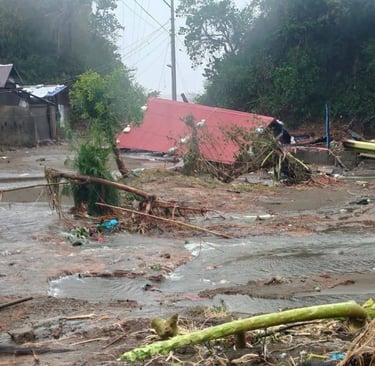Super-Typhoon Forces Mass Evacuations Across the Philippines
WORLD


Typhoon Fung-wong, known locally as Uwan, has swept across the northern Philippines, triggering large-scale evacuations, flooding and strong winds as communities continue to recover from an earlier deadly storm.
The typhoon made landfall on Sunday evening in Aurora Province on the island of Luzon, bringing sustained winds of around 185 km/h and gusts above 230 km/h, placing it among the strongest storms to hit the country this year. As it tracked across Luzon overnight, it gradually weakened but remained powerful enough to cause widespread disruption.
Disaster management officials reported that more than 900,000 residents either moved to evacuation centres or relocated to safer areas. At least two deaths have been confirmed: one victim drowned and another was found under collapsed debris in Catbalogan City.
Heavy rainfall has led to landslides and rising floodwaters, particularly in hillside and coastal communities. In parts of Albay, homes built near steep slopes were left dangerously close to cliff edges after the earth gave way under continuous rain.
Air travel has been heavily affected, with close to 300 flights cancelled, while several airports and seaports have halted operations. The Coast Guard has also suspended ferry services in high-risk zones, leaving some areas temporarily cut off.
In Sabang, businesses along the coast were evacuated ahead of the storm, with staff securing properties and tying down windows in an effort to minimise damage. Some residents said they planned to return home only once the winds eased.
Families seeking shelter in a sports centre in central Aurora said the emotional impact of Typhoon Kalmaegi, which struck just days earlier and left more than 200 people dead, added to their urgency.
The government declared a state of calamity in advance, allowing faster mobilisation of relief supplies and emergency funds.
The Philippines experiences frequent typhoons due to its location in the western Pacific cyclone corridor. While the total number of storms may not be increasing, scientists say warmer seas are allowing typhoons like Fung-wong to become more intense, with heavier rainfall and stronger winds — increasing the danger to communities already living in exposed areas.
Even as Fung-wong weakens while moving further west, officials warn that flooding and landslides remain a major threat, especially in low-lying and mountainous regions.